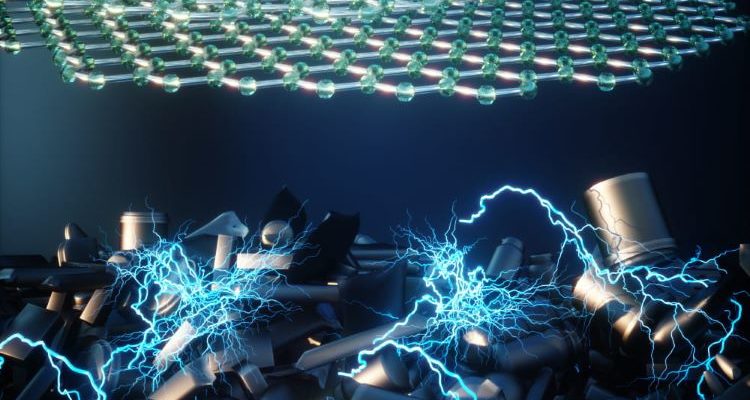Graphene nanostructures, nanoelectronic devices and tools (PhD in nano-microelectronics)
Researcher and author: Dr. ( Afshin Rashid)
Note: Graphene nanoparticles are a suitable alternative to nanoelectronic devices and tools for the production of electronic nanostructures due to their high electrical properties and the abundance of their main constituent, graphite, in nature .
On the other hand, due to the unique properties of graphene, including nanoelectric , nanoelectrochemical and high specific surface properties , it can be used in many applications such as sensors, nano-transistors, energy storage sources and various types of nano devices. Microelectronics has increased dramatically. Graphene has significant nanoelectronic properties including; High yang modulus; High fracture toughness , excellent nanoelectric conductivity, fast mobility of (nano loads) . There is a simple electrostatic interaction between graphene nanoparticles in a solution, graphene nanoparticles such as semiconductors, nanotransistors.Graphene is fundamentally different from other two-dimensional or three-dimensional graphite materials in terms of building blocks, and other carbon geometric shapes, such as zero-dimensional spherical fullerene. Graphene is a single layer with one-dimensional carbon nanotubes of a hexagonal ring that can be superimposed on a flat aromatic pie structure (conjugate). The flat structure of graphene provides excellent capability for the application of this material in the field of transmission and electrostatic interaction in nanoelectric devices. Structure of Mutant Nanomaterials The importance of the nanoscale in changing the properties and characteristics of materials in these dimensions. Properties such as strength, flexibility, electrical conductivity, magnetic properties, color, reactivity and so on. The beginning of changing the properties of a material by shrinking it depends more on the type of material and the desired property. For example, as the dimensions of a nanoporous material shrink, some of the mechanical properties of the material, such as strength, generally improve.
The application of graphene nano-strips in interfering electromagnetic nanomaterials and nano-electrostatic discharges in nanoelectronic devices to Rectenna nano-antennas, and nano-supercapacitors. The efficiency of graphene particles is measured in the protection of interfering and reinforced nano-electromagnetic nanoparticles with modified graphene nano-strips. There are single-layer, double-layer and multi- layer graphenes . It is the hardest known material with its low thickness. Graphene is very transparent because it is about the thickness of an atom and transmits light and has a high nanoelectric conductivity.
Conclusion :
Graphene nanoparticles are a suitable alternative to nanoelectronic devices and tools for the production of electronic nanostructures due to their high electrical properties and the abundance of their main constituent, graphite, in nature .
Researcher and author: Dr. ( Afshin Rashid)
PhD in Nano-Microelectronics




